I recently had an opportunity to talk about PennDOT’s Penn Street Bridge Project in Reading at the American Planning Association’s Pennsylvania Chapter conference this past October.
There was one hitch: each presenter had only seven minutes. Seven minutes?? I could easily fill hours with Penn Street Bridge stories.
The time limit forced me to consider which part of the project makes me most proud. I was reminded there wasn’t one single factor driving its success; it was the culmination of everyone’s role in the process.
This project involved rehabilitating the National Register-eligible Penn Street Bridge, which spans the Schuylkill River and connects the City of Reading and Borough of West Reading in Berks County.
So, what are the key components of the Penn Street Bridge Section 106 success? Read on.
The Community:
It all starts with the community.
The City of Reading appreciates their historic resources. There are five identified historic districts and several individual properties determined eligible for or listed in the National Register of Historic Places.
Reading boasts five large open-spandrel concrete arch bridges. Penn Street Bridge is the oldest, constructed in 1913. It was determined eligible for listing in the National Register of Historic Places in 2007 and reevaluated in 2019. You can learn more about the bridge in CRGIS, Key #000231.
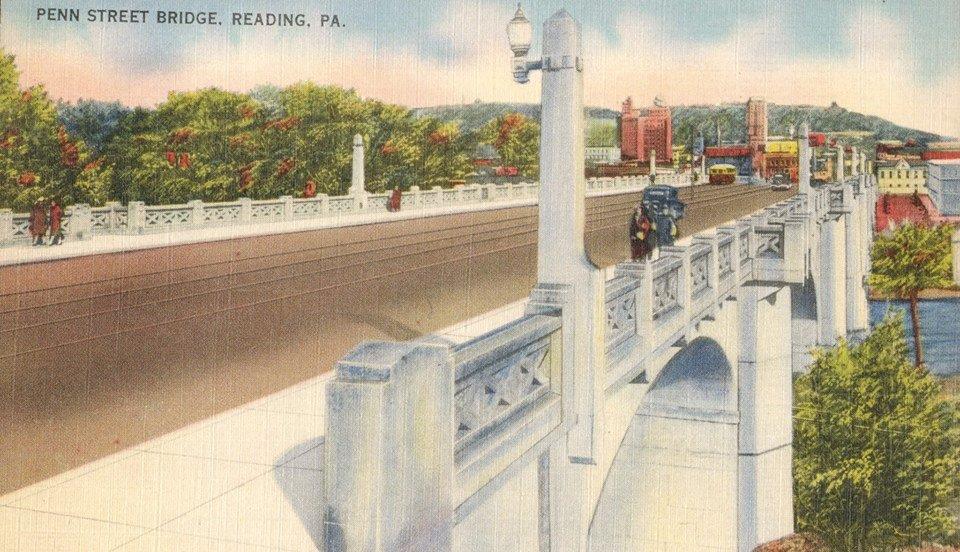
It occupies a prominent position, spanning the Schuylkill River and the historic alignments of a canal and railroad, connecting the downtowns of West Reading and Reading. The Reading Area Community College’s campus is located directly to its north and south. The bridge supports a constant flow of vehicular and pedestrian traffic on top and below.
Check out this aerial drone interactive 360-panoramic of the bridge: Downstream and Upstream views from October 2018.
This visibility likely contributes to the community’s awareness of the resource. Fondness for the bridge became clear when the community threw it a 100th birthday party. How many bridges get their own birthday party? That’s love.
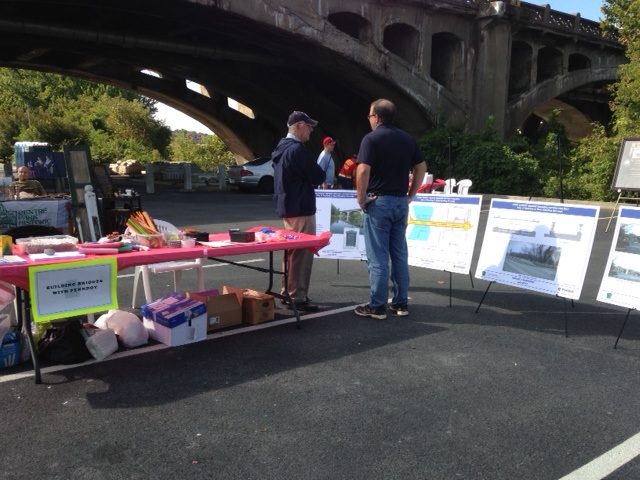
The Timing:
PennDOT and Berks County engineers and planners recognized not only was the bridge an important historic resource to the community, but it was reaching the age where it would soon require more than just routine maintenance. Addressing its structural needs before the bridge deteriorated beyond rehabilitation was timely and imperative.
The County:
Berks County’s transportation planner, Alan Piper, also played a vital role in its success. He’s a fixture at our historic resources (consulting parties) meetings. Alan not only understand PennDOT’s mission to balance transportation needs with cultural resources management but is actively engaged in the decision-making process. He attends meetings and field views, weighs in on construction detail consultation, and offers invaluable information on project and community needs.
The Consulting Parties:
This is a Federally-funded undertaking; therefore, the project’s effects on National Register-eligible resources such as the bridge must be considered.
As part of this process (often referred to as Section 106, from the National Historic Preservation Act of 1966), PennDOT offers people with a legal, economic, or historic preservation interest in the project to be consulting parties.
This project’s consulting parties represented organizations, institutions, and companies with interest in a successful bridge rehabilitation. Regardless of their stake, they came to the table, early and often, from the beginning of Preliminary Engineering through the end of Construction, with an understanding of how and a willingness to build consensus.
This is a complex bridge with many design elements requiring consulting party feedback, which provided several opportunities for dialog.
For instance, one of our consulting parties asked if the obelisks, missing from the bridge prior to rehab, could be reconstructed. Unfortunately, it wasn’t possible without losing other design elements. However, one of our other consulting parties cleverly proposed a compromise: reconstructing just one set of obelisks on the far east end, visible to travelers entering Reading. PennDOT was able to accommodate this suggestion.
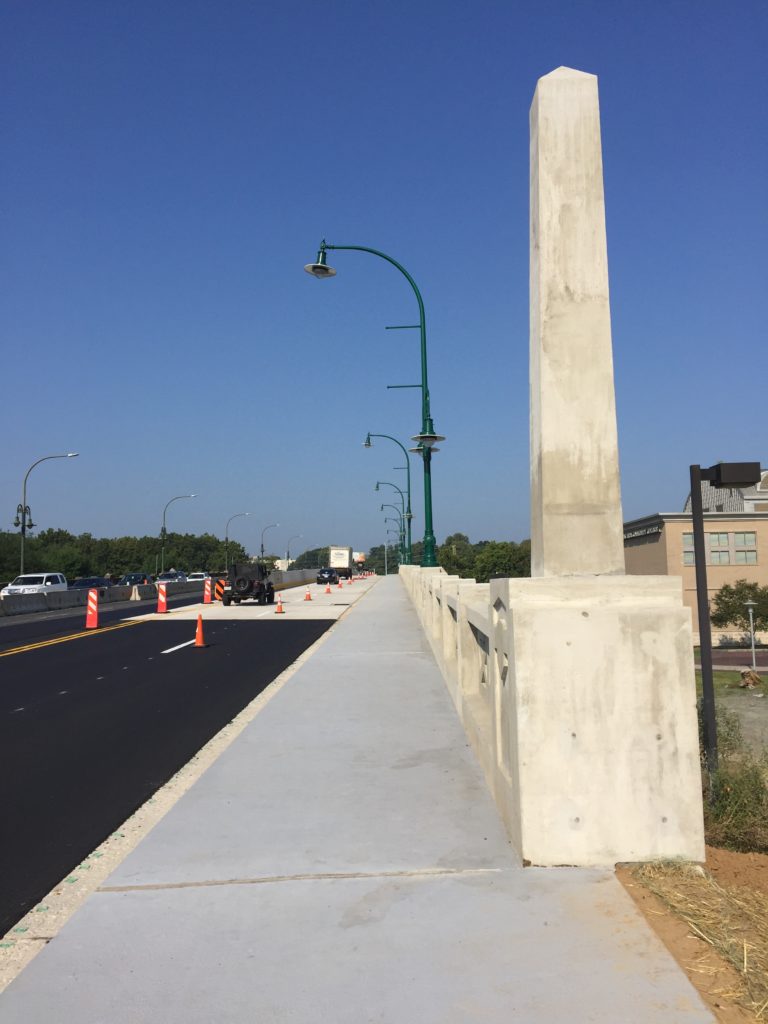
The SHPO:
The Pennsylvania State Historic Preservation Office (SHPO) reviews projects like this with potential to have adverse effects on historic resources. Their office is a reliable advocate for the state’s historic resources.
They recognize bridge rehabilitations meeting the Secretary of the Interior’s Standards for Rehabilitation are wins for the Commonwealth and work closely with PennDOT and the consulting parties throughout the design and construction process.
PennDOT and the SHPO rely heavily on the Standards, particularly while determining appropriate plans for repairs and reconstruction on bridge projects like this. PennDOT initially thought the protrusions from the Penn Street Bridge parapets were planters.
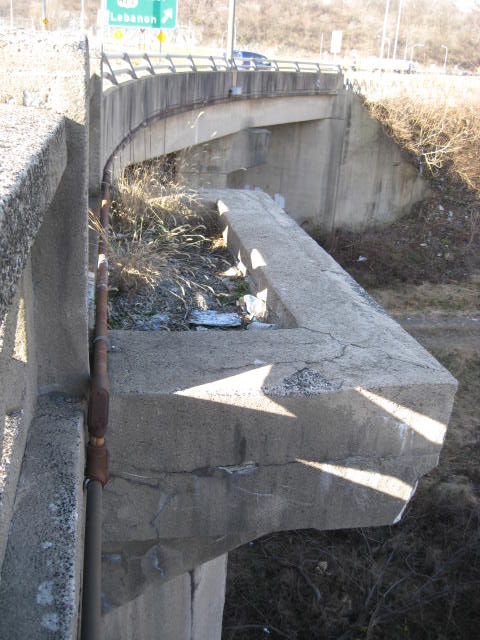
Research revealed these were originally alcoves. After discussion with the SHPO and other consulting parties, PennDOT was able to incorporate reconstruction of the alcoves into the design in accordance with the Standards.
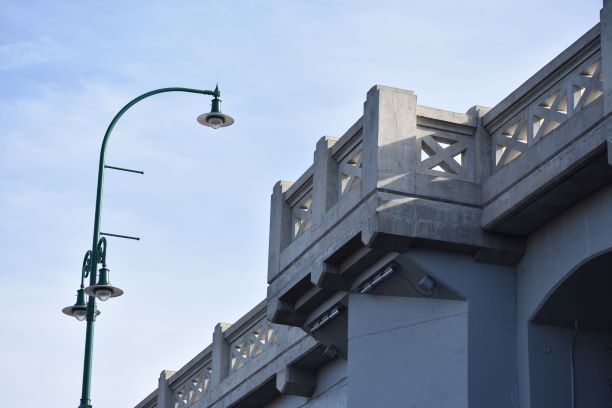
The District:
Two other factors contributing to the success story were my PennDOT District’s willingness to take a risk and my chief Bridge Engineer’s respect for historic structures.
Recent concrete bridge rehabs have struggled with how to minimize the visual contrast between new, stark-white and 100-year old concrete. Although the District had issues with other coating systems, they were willing to try a well-researched epoxy coating system to achieve a consistent look on the spandrel walls.
The District and our Bridge Engineer understood Penn Street is a visual gateway, had faith in our engineering prime and contractor, and was willing to invest the money in order to get an effective, long-term product.
The Engineer:
Gannett Fleming was the engineering prime. Their two engineers on the project genuinely like old bridges. They understand what makes them structurally significant. They understand what makes them important to the community. They understand how to build relationships with the public and consulting parties.
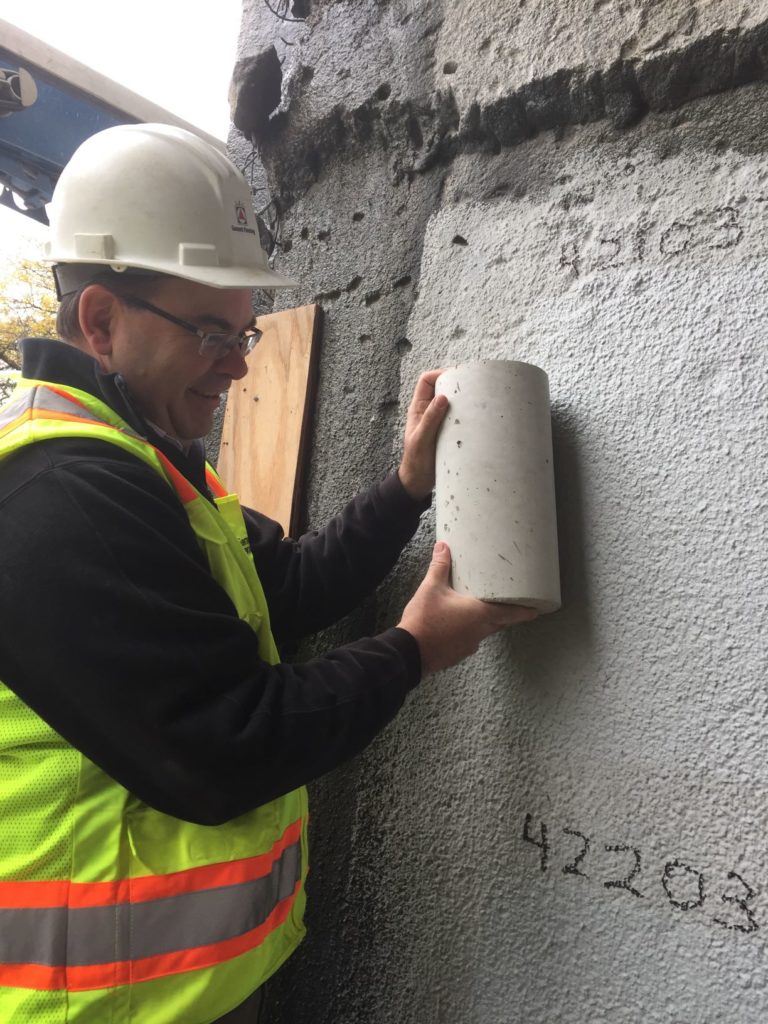
They were one of the major driving forces behind the project’s success.
The Contractor:
J.D. Eckman, the contractor, was also an integral part of this project’s success. Their staff worked with one of District 5-0’s best construction project managers, took the time to learn about the Section 106 commitments, and developed a plan to ensure compliance.
They communicated early and often, knowing what needed District and consulting party input. They weren’t timid about telling their subcontractors “no.” Expectations of their own work product were high.
Reconstruction of the parapets is an excellent example of this – the level of technical difficulty was high, and the outcome was fantastic.
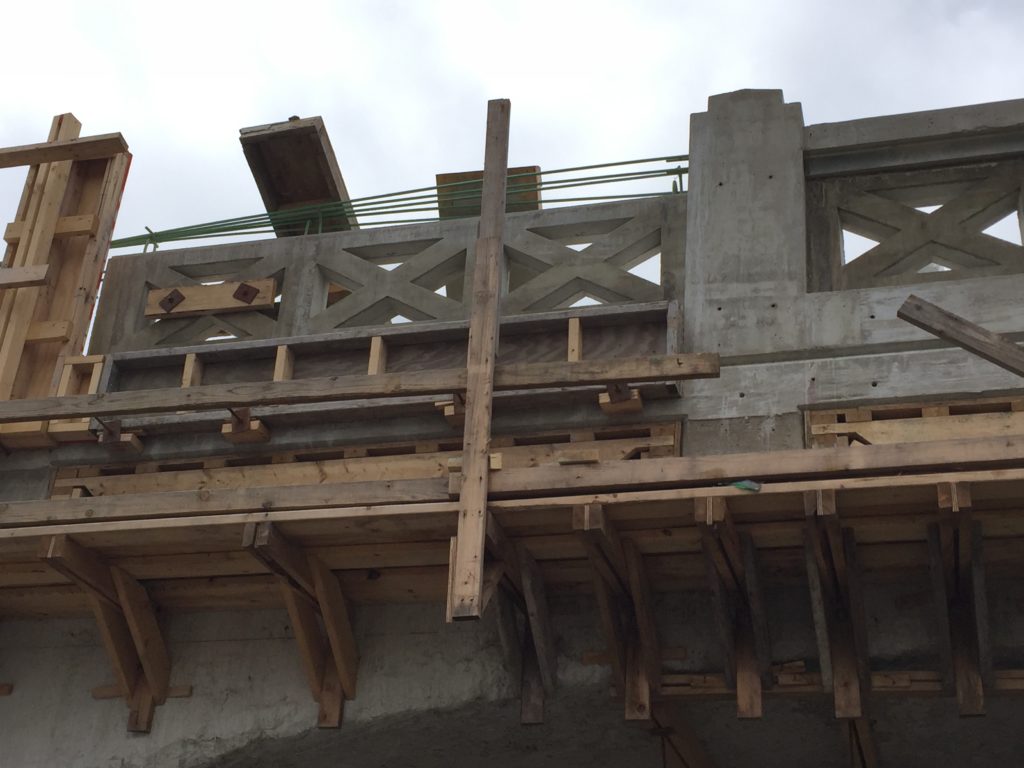
But knowing that not all formwork turns out well, I asked Eckman’s project manager what she thought was the key to such a fantastic end product. She attributed it to having highly skilled carpenters build the forms, having staff experienced with concrete work in charge of these tasks, and using high quality material.
The End:
The December ribbon-cutting ceremony reflected the collaborative nature of the project. Representatives from the city, borough, county, community college, neighborhood groups, and state representatives’ offices attended.
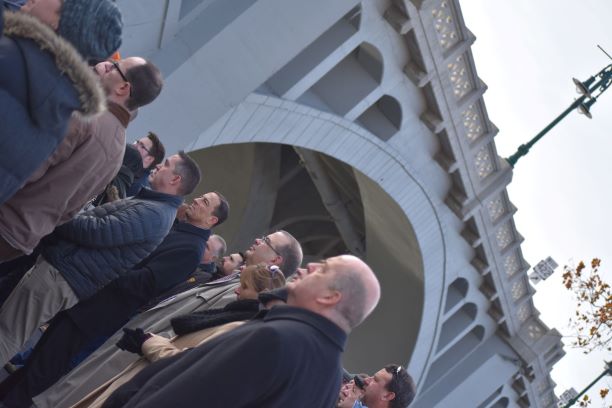
You can check out drone footage of the completed bridge from April 2019 here.
The ultimate stamp of approval, however, came months before, when the contractor was shifting traffic to the other side of the bridge, causing vehicles to slow down. Car windows opened, and people leaned out. PennDOT staff and contractors are well-acquainted with angry drivers loudly expressing their frustration as they pass by.
But this time, there were shouts of thanks, thumbs up, and declarations of a job well done.
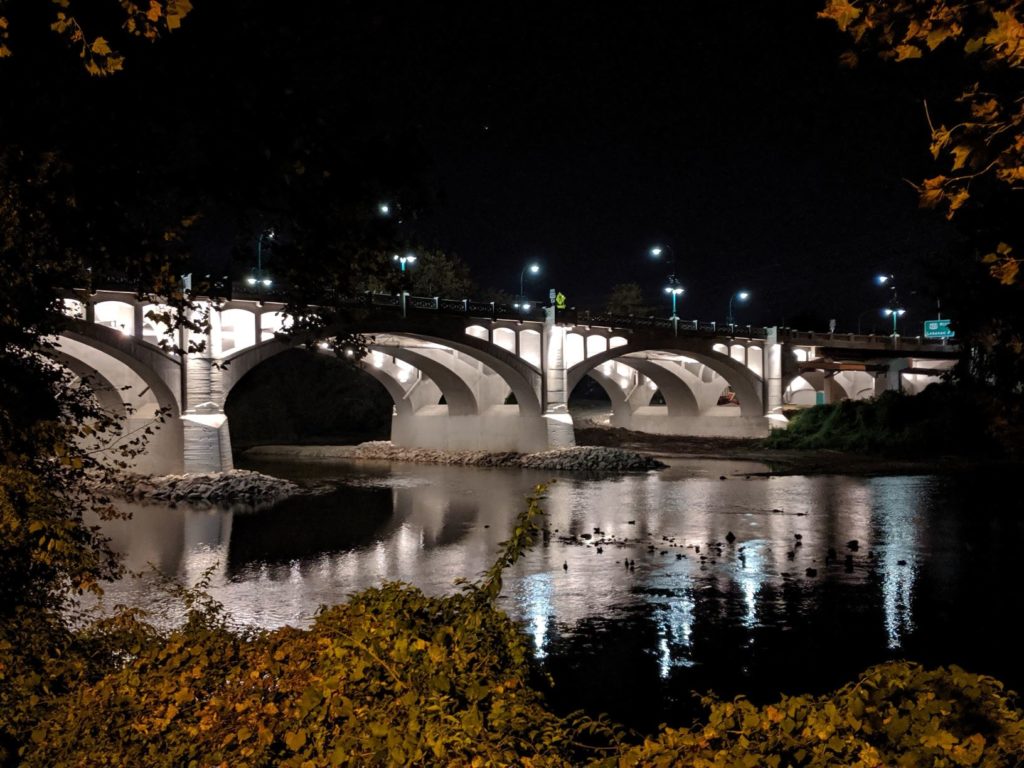
This week’s guest author is Kristina Lammi Thompson. Kris is a Cultural Resources Specialist for PennDOT’s District 5 and an Above-Ground Cultural Resources Supervisor with PennDOT’s Bureau of Project Delivery. One of Kris’s roles as a Cultural Resources Specialist is to guide projects through the Section 106 process; her ability to communicate and follow through with all the Penn Street Bridge project players is also a large part of this Section 106 Success Story.
Comment Policy
PHMC welcomes and encourages topic-related comments on this blog. PHMC reserves the right to remove comments that in PHMC’s discretion do not follow participation guidelines.
Commenters and Comments shall be related to the blog post topic and respectful of others who use this site.
Commenters and Comments shall not: use language that is offensive, inflammatory or provocative (this includes, but is not limited to, using profanity, obscene, or vulgar comments); disparage other commenters or people; condone illegal activity; identify the location of known or suspected archeological sites; post personal information in comments such as addresses, phone numbers, e-mail addresses or other contact details, which may relate to you or other individuals; impersonate or falsely claim to represent a person or an organization; make any commercial endorsement or promotion of any product, service or publication.
If you would like to comment on other topics not related to this blog post but related to PHMC, please fill out the PHMC Contact Us Form.
What a great article celebrating an excellent historic bridge rehab project! That last photo shows the beauty of the bridge design. Thanks for sharing a success story.
Thanks, Pam! I enjoyed this project, from beginning to end. I’m so pleased your office provided an opportunity for me to share it with your readers.
Well done, Kris. You can spend a career at PennDOT waiving at the concrete headed to the landfill or the steel off to make Hyundais and feel it can be hopeless. Then something like this happens and all is well with the world.
Indeed, Ira. It’s the preservation wins that motivate us to do our best. Being able to take part in a project that preserves a structure for my grandchildren’s generation makes me proud.
Amazing! You’re absolutely right, community and relationship is so crucial to the preservation of important and valued places. The bridge looks stunning, what a result!
Thank you! The success was certainly due to a combined effort of so many people willing to go the extra yard.
it is always a good idea to preserve structures that are part of the state’s history. That is for the young generations to know.
I wholeheartedly agree!
Thanks for sharing this great article, worth the read.
Great article! Thanks for sharing
Thanks for the share.
Well done! I’m glad I was able to visit your website. Thanks a lot!
What a stunning night time photograph of The Penn Street Bridge. Is that picture available for purchase anywhere? My grandfather was one of the engineers, Benjamin Herman Davis. Of course, I never met him as he died of TB when my mother, Dorothy Davis, was just 4 years old.
Hello, your presentation of Penn St. Bridge is awesome. Beautiful final rehab result! I’m curious about a separate area slightly down stream from Bingaman St. I live in Lancaster city, and like Reading, both municipalities have very rigid North/South arteries running through them catering to vehicle traffic. I’m just spit-balling here, but I’m curious if at one time was there ever a bridge structure crossing the Schuylkill at S. 5th Street? If you look at google maps there very clean alignment from S. 5th Street in downtown Reading, straight across the river to Summit Ave on the south bank. Did ANY of the # streets ever previously cross the Schuylkill?
Thank you for your insight,
Isak